Production Year 2024
Passing Down Hiroshima Notes
DC282405![]()
コネクト ヒロシマ・ノートをつなぐ [NHK]
![]()
![]()
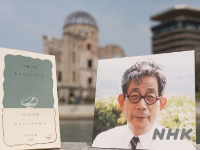
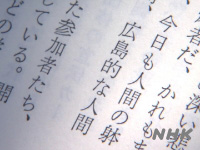

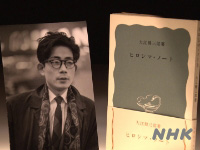
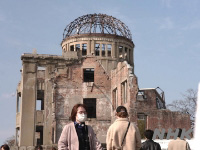
|Length : 25min |Year : 2024 |
Hiroshima Notes was written in the 1960s by Oe Kenzaburo, a Nobel Prize-winning author. The book has been translated into nine languages and remains a bestseller that is read worldwide. This program revisits the messages of "Hiroshima Notes" and explores the individuals and locations associated with Oe. Interviewees share what it means to them and emphasize the importance of passing down its values to promote peace.
A Final Lesson Atomic Bomb Survivor Kajiya Fumiaki
DC282406![]()
A Final Lesson Atomic Bomb Survivor Kajiya Fumiaki [NHK]
![]()
![]()



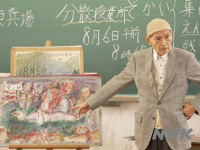
|Length : 25min |Year : 2024 |
What if this was the final lesson you would ever teach? What would you say? Atomic bomb survivor and former elementary school teacher Kajiya Fumiaki, age 85, holds a special class at an Osaka elementary school. He was six years old when the bomb fell, at school just 1.8 km from the epicenter. His sister, who was with him, was killed. Kajiya uses a picture-card show he drew himself to explain what happened that day and brings a special object to share with the class. With an operation for bowel cancer looming, what final lesson will Kajiya teach the children?
 A Passionate Challenger | A Passionate Challenger
Tokyo Bay Licensed PILOTS’ Association
The Guardians of Crowded Waters
A Passionate Challenger | A Passionate Challenger
Tokyo Bay Licensed PILOTS’ Association
The Guardians of Crowded Waters
DC282499![]()
情熱大陸 東京湾水先人会
![]()
![]()
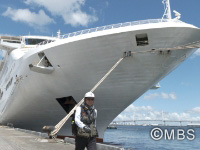
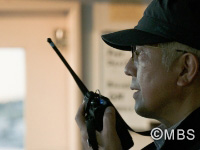


|Length : 25min |Year : 2024 |
Unprecedented inflation is putting immense pressure on our daily lives. In Japan, where a large amount of essential goods, petroleum, natural gas, and other energy resources are imported, over 99% of exports and imports are transported by sea. Tokyo Bay, in particular, is one of the busiest maritime areas in the world, teeming with cargo ships from across the globe. It is also one of the most difficult waterways to navigate, due to its complex geography and average depth of only 15 meters.
Ensuring the safety of this critical hub around the clock are maritime pilots. Specialists in the bay’s navigation, they board incoming ships and assist captains in safely steering through these treacherous waters.
Our cameras followed their work and the efforts of those who support them behind the scenes. Among these indispensable partners is the TOKYO WAN Vessel Traffic Service Center, or Tokyo MARTIS. Known as the “police of the sea,” they monitor all ships within Tokyo Bay to ensure operations run smoothly and on schedule.
Summer brings its own set of challenges, particularly as typhoons strike the Tokyo area. Navigating rough seas can lead to collisions and other accidents, making cancellations the general rule. But this can result in substantial disruptions to schedules, so how do they maintain safety while keeping operations seamless?
This program sheds light on the unseen frontlines of those working tirelessly to keep Japan’s lifelines running safely and efficiently.
Giving Voice to Hope
DC292448![]()
「声」-あなたへ 2024春編 [CBC]
![]()
![]()

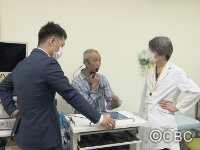
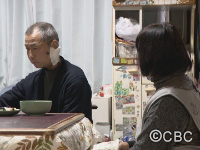


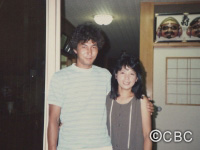
|Length : 50min |Year : 2024 |
"A ‘voice’ is a person’s life… You can save a voice, but you cannot make them happy," reflects a doctor. Hiroyuki Tashima, a 63-year-old truck driver, lost his voice after a laryngectomy due to stage 4 throat cancer. His primary physician is Dr. Naoki Nishio at Nagoya University Hospital’s Otorhinolaryngology Department.
Hiroyuki now uses an electrolarynx to produce his ‘voice,’ but the sound is monotone.
Unable to speak in a loud ‘voice,’ daily interactions, including work and shopping, are challenging. Hiroyuki’s dream is to speak again with his 2-year-old granddaughter, Ayano, using his original voice.
This dream may come true with the ‘Save the Voice Project,’ led by Dr. Nishio and started in 2021.
The project aims to develop an app that can convert the mechanical sound of an electrolarynx into a person's natural voice. This innovation could give a ‘voice’ back to 30,000 people in Japan who have lost theirs. This program follows the project’s progress over a year and a half since 2022.
Testimony of 100 Tsunami Survivors Evacuation Saves Lives
DC372423![]()
100人の証言 命をつなぐ津波避難 [KHB]
![]()
![]()
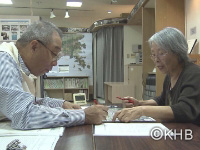
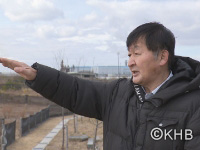
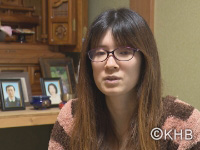
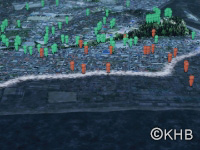
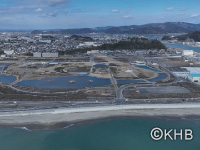
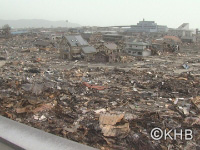
|Length : 25min |Year : 2024 |
On March 11, 2011 the Great East Japan Earthquake triggered a massive tsunami that devastated Ishinomaki City in Miyagi Prefecture and killed nearly 4,000 residents, the most of any municipality impacted by the quake.
To understand why so many residents failed to escape, and to pass on lessons of tsunami evacuation to future generations, a legacy group conducted a survey of 100 survivors. The interviews shed light on evacuation behavior that day and allowed researchers to recreate survivors’ actions using computer graphics. The results reveal a pattern of dangerous evacuation decisions, but also heroic actions that saved many lives.
,Thirteen years since the great earthquake and tsunami, it is hoped that a better understanding of evacuation behavior, and the voices of survivors, will help save lives in the future.














